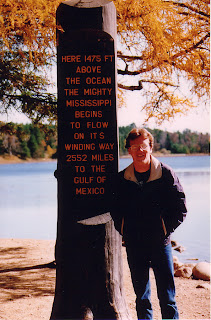I had always felt that the merits of On the Waterfront were overstated by the critics when they would refer to it as one of the greatest films ever. I thought that even other movies by director Elia Kazan such as A Streetcar Named Desire, East of Eden or even A Face in the Crowd was better. However, though more sentimental than these other films, watching On the Waterfront again made me think that this particular film is likely better than Kazan’s other movies upon reviewing and stands the test of time in a better fashion.
On the Waterfront is a surprisingly simple story as the film is only 108 minutes long. Terry Malloy (Marlon Brando) witnesses the killing of Joey Doyle who is rumored to be speaking to the feds about corruption in the labor union for dock workers. Malloy’s own brother, Charlie (Rod Steiger), works for the mob boss, Johnny Favor (Lee J. Cobb). Another dockworker, Kayo Dugan (Pat Henning), also speaks to the feds about dock conditions and also gets killed.
Terry’s conscience is sore. To complicate matters, Terry also falls in love with the sister of the Joey Doyle, Edie (Eva Marie Saint). Edie has also been speaking to Father Barry (Karl Malden) and together they both try to convince Terry that he should testify as to what happened. Charlie tries to convince Terry in the famous taxicab scene that he needs to stay away from Edie and to not testify against Johnny. However, instead of convincing Terry to not testify he hints that Terry’s life in trouble. This results in Charlie being killed. Though Terry at first wants to murder Johnny, Father Barry convinces Terry to testify. Terry’s testimony eventually leads to Johnny Favor losing his power with the union. Terry walks onto the docks bloodied up by Johnny’s goons, but they are unable to stop him from going to work.
The movie owes its reputation greatly to the acting of Brando. The film may have been too syrupy with anyone else in the lead. Malden, like in so many other films he is in, comes across as a tad bit self-righteous. Eva Marie Saint is good as the love interest as she perfectly portrays innocence, but this is a coming of age film for men. Brando, Lee J. Cobb and Rod Steiger play the important roles in the film and play their macho roles wonderfully. (It’s also a film with three former heavyweights, Tony Galento, Abe Simon and Tami Mauriello, all who were knocked out by Joe Louis.) We can all talk about the score or the film lighting for this movie. However, it’s the story and the acting of Brando that give it significance.
My ambivalence to this film probably always will go back to it being directed by Kazan. Kazan and the screenwriter for On the Waterfront, Budd Schulberg, testified for the House Un-American Activities Committee, and both named names. The two former Communists turned against other in Hollywood. Kazan gave at least eight names to the HUAC.
I watched a documentary the other night about Kazan and there were all sorts of excuses for why Kazan took the actions that he did. One actress who had starred in East of Eden stated it was not her place to judge. Though most can probably appreciate her sentiment, I’m guessing those that were named had a slightly different take.
On the Waterfront is sometimes referred to as Kazan’s response to his critics who claimed he should never have testified. If this is true it does seem like a rather odd defense. In On the Waterfront the little guys’ livelihoods were being threatened with extinction if they testified rather than conformed. In the HUAC hearings, the little guys were being testified against and having their careers ruined just for being named. Those making up the HUAC and the mob bosses were not so very different.
The weakest segment of On the Waterfront is towards the end where we have the farcical fight scene between Terry and Johnny Favors. In almost all of Kazan’s films he does not know how to finish the movie up well. Still, On the Waterfront holds up even with this ending perhaps due to the simplicity of the story. The scenes between Brando and Eva Marie Saint show real tenderness. And there’s grittiness that, along with the acting of Brando, will make the movie remembered. Perhaps the whole film doesn’t quite fit together because Kazan was trying in the end to put his thumb on the scales.
© Robert S. Miller 2013
